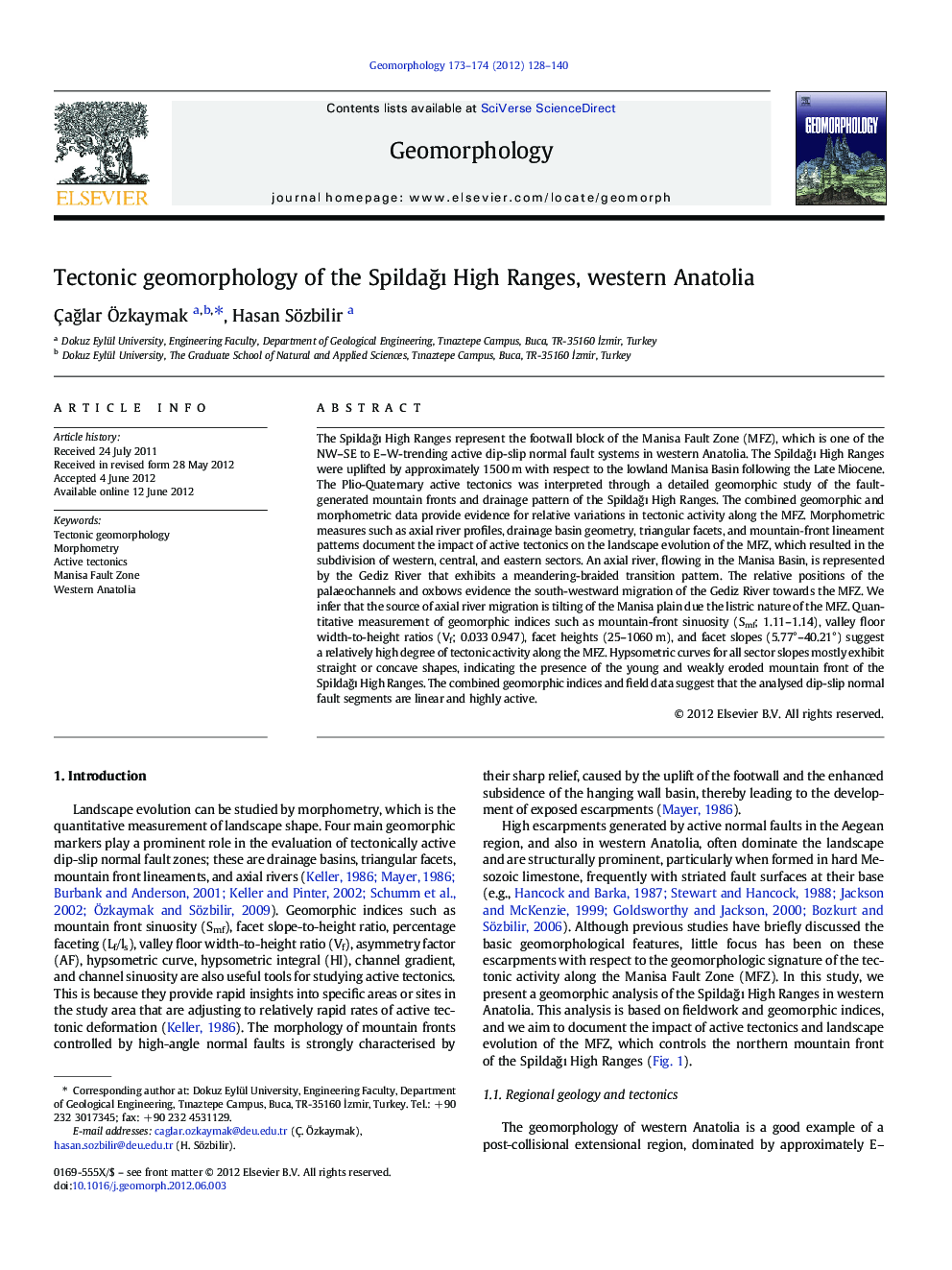| کد مقاله | کد نشریه | سال انتشار | مقاله انگلیسی | نسخه تمام متن |
|---|---|---|---|---|
| 4685086 | 1635472 | 2012 | 13 صفحه PDF | دانلود رایگان |

The Spildağı High Ranges represent the footwall block of the Manisa Fault Zone (MFZ), which is one of the NW–SE to E–W-trending active dip-slip normal fault systems in western Anatolia. The Spildağı High Ranges were uplifted by approximately 1500 m with respect to the lowland Manisa Basin following the Late Miocene. The Plio-Quaternary active tectonics was interpreted through a detailed geomorphic study of the fault-generated mountain fronts and drainage pattern of the Spildağı High Ranges. The combined geomorphic and morphometric data provide evidence for relative variations in tectonic activity along the MFZ. Morphometric measures such as axial river profiles, drainage basin geometry, triangular facets, and mountain‐front lineament patterns document the impact of active tectonics on the landscape evolution of the MFZ, which resulted in the subdivision of western, central, and eastern sectors. An axial river, flowing in the Manisa Basin, is represented by the Gediz River that exhibits a meandering-braided transition pattern. The relative positions of the palaeochannels and oxbows evidence the south-westward migration of the Gediz River towards the MFZ. We infer that the source of axial river migration is tilting of the Manisa plain due the listric nature of the MFZ. Quantitative measurement of geomorphic indices such as mountain-front sinuosity (Smf; 1.11–1.14), valley floor width-to-height ratios (Vf; 0.033‒0.947), facet heights (25–1060 m), and facet slopes (5.77°–40.21°) suggest a relatively high degree of tectonic activity along the MFZ. Hypsometric curves for all sector slopes mostly exhibit straight or concave shapes, indicating the presence of the young and weakly eroded mountain front of the Spildağı High Ranges. The combined geomorphic indices and field data suggest that the analysed dip-slip normal fault segments are linear and highly active.
► We perform tectonic geomorphology and morphometry analyses.
► The combined geomorphic and morphometric data provide evidence for tectonic activity.
► Uplift of the Spildağı High Ranges can be explained by at least two tectonic phases.
► The analysed dip-slip normal fault segments are linear and highly active.
Journal: Geomorphology - Volumes 173–174, 1 November 2012, Pages 128–140